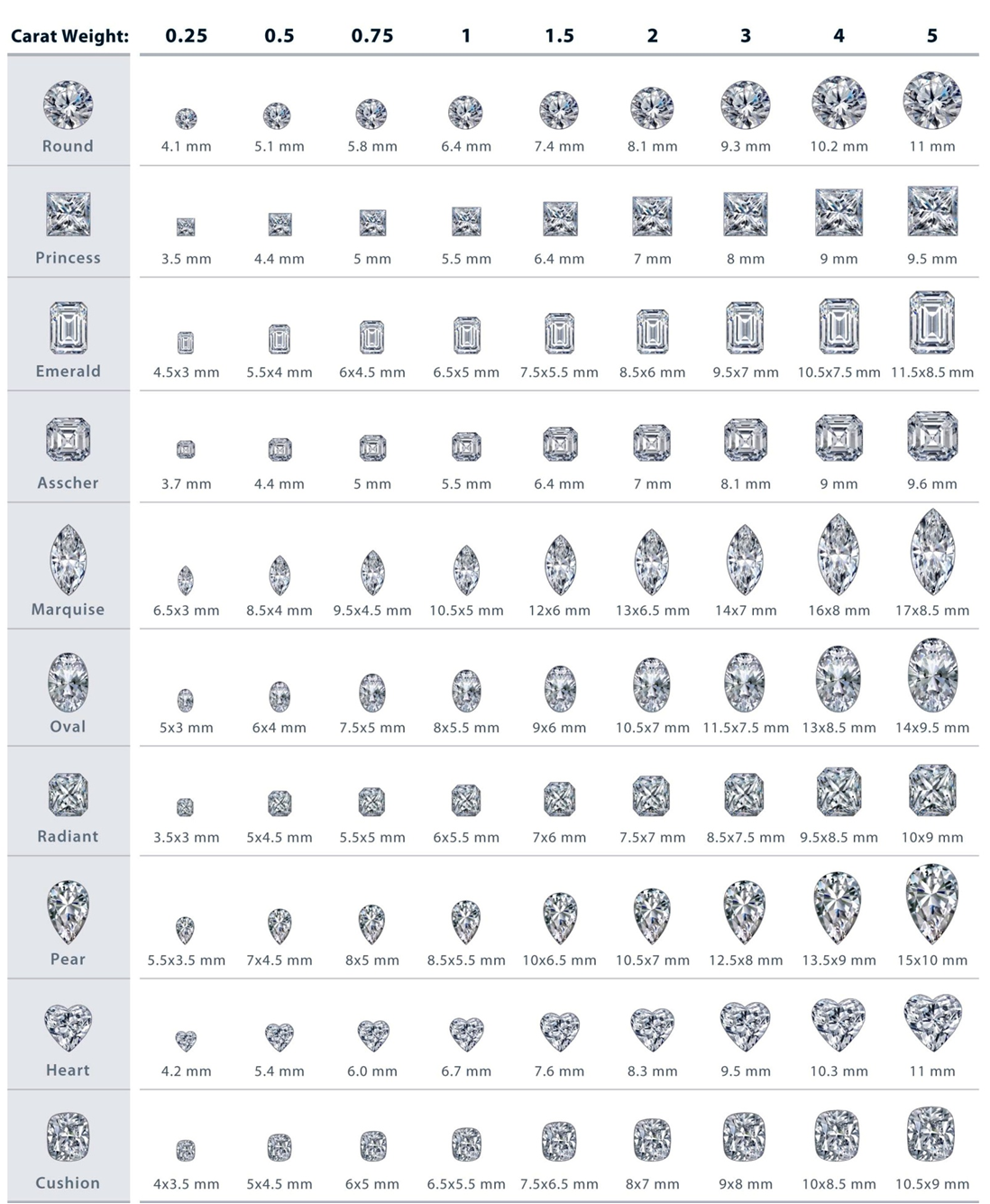|
|
 |
| THE 4C's OF DIAMONDS |
 |
| 1) Cut |
Cut refers to the proportions, finish, symmetry, and polish of the diamond. These factors determine the fire and brilliance of a diamond. Well cut diamonds sell at a premium and poorly cut diamonds sell at discounted prices. With the advent of technology, the cut of the diamond can be determined through the use of the Dia-Mension system, a computerized system which takes accurate measurements and proportions of a diamond in seconds, in addition to the standard millimeter gauge.
As an example, a round brilliant cut, which has 58 facets, is shown below. Since the quality of the cut is directly responsible for the stone's beauty, the precision with which the facets are arranged is of prime importance. They determine the amount of light reflected to the eye, called brilliance.
The proportions displayed by the stone are very significant. Two of the key factors in the grading of cut quality -- table percentage and depth percentage -- are usually expressed on grading reports.
|
|


|
| 2) Color |
|
Color describes the amount of yellow tint the diamond contains, or lack thereof. This can range from colorless to yellow with slight tints of yellow, gray or brown. Colors can also range from intense yellow to brown, blue, green, pink and red. These fancy colors are rare and therefore more valuable. A color grade of D is the highest possible, while Z is the lowest and most yellow. Milano sells diamonds with a color grade of J or higher. The less color a diamond has, the higher its color grade. Color is usually the next most important characteristic when selecting a diamond after cut. Below is chart which shows you the different color grades and their meaning:
|
|
 |
|
| 3) Clarity |
|
Natural diamonds are the result of carbon exposed to tremendous heat and pressure deep in the earth. This can result in many internal characteristics called 'inclusions' and external characteristics called 'blemishes.'
Clarity describes the clearness or purity of a diamond. This is determined by the number, size, nature, and location of the inclusions and blemishes. Diamonds which have many or large inclusions or blemishes have less sparkle in them, because the flaws obstruct the path of light which passes through the diamond. Almost all diamonds are graded for clarity using the 11 point diamond clarity scale created by the GIA (Gemological Institute of America), including diamonds which were not actually graded by GIA. In grading diamond clarity, the GIA considers the number, size, color, reflectivity, and position of every flaw visible under 10x magnification. Below is chart which shows the various clarity grades which are widely used in the diamond industry:
|
|
 |
|
| 4) Carat Weight |
|
Carat Weight is the unit of weight for the diamond. A carat is further subdivided in 100 points ( 0.01 carat = 1 point ). One carat is equal to 100 points or 0.20 grams. The value per carat increases with carat size, because larger rough diamonds occur less frequently. In other words, 2 half-carat diamonds taken together will not cost as much as 1 one-carat diamond, as the one-carat stone is more rare and will cost more. A diamond's weight might not necessarily reflect proportionately to its look. That is because of the way they are cut. A 1 carat diamond with a smaller table and longer pavilion with look relatively smaller in size than a 1 carat diamond with a flatter or larger table and shorter pavilion. An ideal cut diamond shows the best size and proportion in comparison to a shallow or deep cut.
|
|
 |
|
|
|
|
 |

|
|
© 2025 Treasures Fine Jewelry
All Rights Reserved.
|
|
|
|
|
|
|
|
|
Treasures Fine Jewelry and all respective logos are trademarks of Treasures Fine Jewelry.
Use of this website signifies your agreement to the Terms of use and Privacy Policy.
|
|
|
|
|